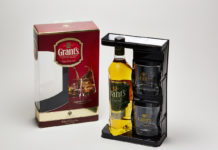
Tony Hitchin of Pro Carton – the European Association of Carton and Cartonboard manufacturers – tells Packaging Scotland why choosing environmentally-friendly packaging materials does not mean compromising on design
THE past few months have been momentous for the packaging industry with high profile campaigns from activists across Europe and TV documentaries all highlighting the impact that plastic waste is having on the environment.
This seems to have forced politicians, retailers and brands into action, with commitments to plastic-free supermarket aisles, pledges to clean up our oceans and new legislation on single-use plastics being discussed almost weekly.
It’s encouraging that the magnitude of the problem is finally being faced up to, but whilst there needs to be a focus on plastic recycling, consideration should be given to the alternative packaging materials that are already available.
Cartonboard is one such alternative. Renowned for its recyclable and renewable qualities, the paper and board industry has consistently achieved a paper recycling rate of 71.5% (paper based packaging achieves over 80%) and has committed to improve this, with the self-imposed target of 74% by 2020, building on the progress achieved since the introduction of the European Declarations of Paper Recycling.
Currently, around 60% of the cartons and cartonboard produced in Europe are made from recycled cartonboard as wood fibres can be recycled several times being combined with virgin fibres to maintain board strength.
Within the European paper and board industry, around 80% of wood fibres come from sustainably managed European forests where annual growth of new wood exceeds the amount harvested by a large margin. For every tree that is harvested in Europe three to four new ones are planted. In fact, each year European forests are said to increase in size by an area twice the size of London!
However, while extolling the virtues of cartons and cartonboard, we’d be remiss not to recognise the wealth of design opportunities the material offers. Cartons allow for a wide range of structural designs and three-dimensional shapes and can incorporate special features to facilitate opening and reclosing, handles, pourers, windows and internal platforms to secure and/or display a product, while intelligent solutions integrated into pack designs can help consumers interact with, and get the most out of, products.
In the pharmaceutical industry, cartons with integral electronics such as an embedded microchip, antenna or electronic circuitry can ‘talk’ to the consumer. For example, recording the time and date when medication is removed from a pack and alerting the consumer when the next pill is required.
Cartons can also be used to incorporate time/temperature devices to indicate the freshness of a product, or printed with conductive inks to incorporate RFID systems for authentication and track-and-trace enhancements to ensure a product is both highly secure and tamper evident.
When it comes to high quality printing, carton and cartonboard is also an ideal medium to ensure a product stands out and achieve recognition with the consumer. From holograms and textures to embossing and other effects, engaging with a consumer’s senses beyond just sight is easily achieved. The range of textured finishes is virtually limitless and offers brand owners another means of improving visibility and attraction at the point of sale. This is not done merely for aesthetic reasons but can also be used to engage with difference audience groups. For example, braille can be added to cartons for those who are visually impaired.
As part of the plan to reduce plastic waste, it’s crucial we assess the materials out there that offer an ecological yet aesthetically-pleasing alternative – allowing brands to achieve a more sustainable business model whilst ensuring consumers still reach for their products time after time.












